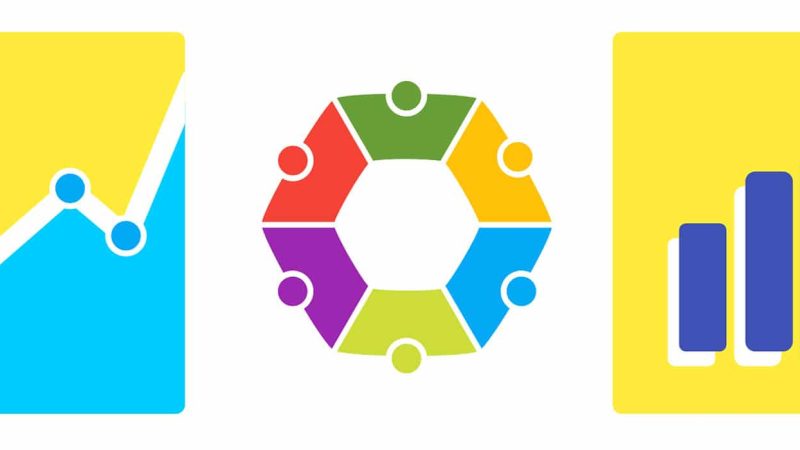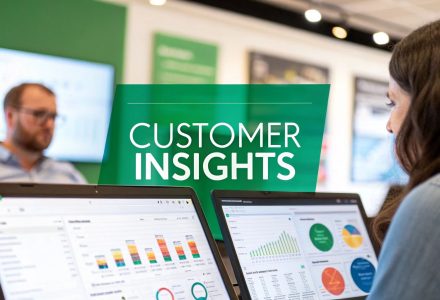“Without data, you’re simply another person with an opinion.”
— W. Edwards Deming
The data science and analytic ecosystems are changing rapidly.
The options you have at your disposal have changed significantly in the past 24–36 months.
If you don’t adopt a proper process, you expose yourself to increased risk of misunderstood metrics or plain guesswork.
One thing I’ve learned in my years of trying, failing, and winning (albeit more failures than wins) — culture plays a pivotal role in overall and long-term success. This could be culture inside the locker room, the office, or at home. As a startup, if you’re able to create the right culture, you can then transform your way of doing business into dominant advantages.
But what defines culture?
By now, most startups and established companies realize the importance of a data-driven culture.
However, what you do with data is what defines your culture.
Based on my experience, including my time on a data science team at JPMorgan Chase and while at Northpeak helping other startups find insights from their data — in this article I share my thoughts on how to build a data-driven culture and what it takes to turn it into a competitive advantage.
“In God we trust, all others bring data.”
The first step is:
Get buy-in from company leaders
Before you decide on a clear strategy for how to use data, the highest level leaders in your company need to buy-in. Everybody needs analytics — marketing, sales, finance, product, etc. Data powers every decision, from the strategic to the tactical, from the board room to your line level employees.
The co-founders of Airbnb from the very beginning bought into data and its role as an important piece in overall company aspirations. Riley Newman, Airbnb’s first data scientist, talks about how bringing him on was a forward-looking move on the part of its founders and their 7 person team. At the time the company was still working out of an apartment when Riley was brought on.
“Back then we knew so little about the business that any insight was groundbreaking; data infrastructure was fast, stable, and real-time (I was querying our production MySQL database); the company was so small that everyone was in the loop about every decision; and the data team (me) was aligned around a singular set of metrics and methodologies.”
— Riley Newman
- Start to craft a high-level strategy in line with company goals
- Use Google Analytics and Google Tag Manager if you aren’t already (free)
- Prioritize data strategy in company meetings
- Start to think about time and resource commitments
- Assign/hire someone to be Head of Data — this should be someone who can speak to the business and technical side + influence culture. If these concepts are new to you as a business owner, it’s best to partner with/hire individuals who understand data warehousing, analysis, and presentation. Putting an actionable data process in place requires the right skill set and likely will need to be customized for your organization.
- Don’t get bogged down in the details yet
“I’m bought-in, how do I build a business that produces actionable data?”
The next three steps are critical steps that create the underlying support for a strong data analytics culture.
Create a data strategy
— Dwayne Gefferie
Two questions to get you started:
1. How will data improve our product?
2. What decisions could we make if we had all the information we need?
- Conduct meetings to gain agreement among stakeholders
- List out key business goals and how this investment will solve customer needs
- Define and validate the scope of work
- Build a requirements document
- Partner with digital and IT resources
Choose the right data
Planning your destination determines the route.
Look at the goals you’ve identified and back your way into what metrics are most important to track. This may seem like a daunting task but think about the 80/20 rule here. You need to start with what’s most important and will quickly make an impact.
In marketing, the change into a data-driven culture might focus on goals of identifying the target audience and minimizing ad costs through customer segmentation. At JP Morgan Chase, some of the data we collected, measured, and analyzed was to help our sales team. A typical goal might’ve been to identify team opportunities and strengths, understand customer needs, and maximize sales by connecting the right team member in the cycle (with the right information) with the most likely purchaser.
Look at what data you currently have and see what evidence-based decision making is possible. Then create a future state analysis and see what gaps there are. Think about the complete customer journey and what motivates a customer.
For example, if customer experience or operations can log requests for new features or products, a trend may emerge in which your tech team can conduct additional research and your growth team can incorporate new hypothesis into the next cycle of A/B tests.
- Conduct hands-on meetings with key partners across the company, including your Analytics Lead
- Create a spreadsheet of what data and metrics are most important
- Leverage process and customer journey maps
- Create a taxonomy that is standardized
Use the right tools to collect data
“Social media generates terabytes of nontraditional, unstructured data in the form of conversations, photos, and video. Add to that the streams of data flowing in from sensors, monitored processes, and external sources ranging from local demographics to weather forecasts.”
Even though the exact tools you use will vary based on company size and needs, all companies should have a single source of truth and a data dictionary.
Carl Anderson, a product researcher at WeWork provides more context in a TechCrunch article –
“At WeWork, a global provider of co-working spaces, we provide our analytics users with a core table called the “activity stream,” a single narrow table that provides web page views, office reservations, tour bookings, payments, Zendesk tickets, key card swipes and more. The table is easy for users to work with, such as slicing and dicing different segments of our members or locations, even though the underlying data comes from many heterogeneous systems. Moreover, having this centralized, relatively holistic view of the business means that we also can build more automated tools on top of those data to look for patterns in large numbers of different segments.”
Larger companies must be able to identify, combine, and manage multiple sources of data.
He continues with, “There are often historical reasons why data are siloed. For example, large organizations are more likely to acquire data systems through company acquisitions, thereby resulting in additional independent systems. Thus, a single source of truth can represent a large and complex investment. However, in the interim, the central data team or office can still make a big difference by providing official guideposts: listing what’s available, where it is and where there are multiple sources, the best place to get it. Everyone needs to know: “if you need customer orders, use system X or database table Y” and nowhere else.”
- Identify potential data infrastructure tools (Data Warehouse, ETL, and BI tools)
- Consider hiring a consultant. While it’s great that you’ve found your analytics lead, that person likely isn’t going to have the expertise required to put together all of the components of your tech stack or the experience to solve all of the different analytics problems you’ll face across your business. Mistakes made at this critical stage have serious costs in both time and money as you grow, so it’s important to lay a solid foundation.
- Setup your data infrastructure
- Build a data dictionary
The remaining 3 steps will help build a high functioning data-driven company that produces ROI.
Using the right processes to measure, predict, and optimize
If you’re a regular user, you’ve definitely noticed their personalized playlists based on your music preferences. How does Spotify categorize and recommend that music? You can thank their data science teams for that.
Once you decide on what data to track and you start to collect this data, then you can start to perform analytics, create dashboards, and optimize results. This is also when you put your hypotheses to test. Startups should use at least a weekly cadence for A/B testing.
If you want to learn more about the underlying mindset of this new environment, you can read more here:
-W. Edwards Deming and Peter Drucker.
Think about Netflix’s ability to recommend the perfect movie during date night on Thursdays. It’s actually Valentine’s Day this Thursday (at the time this was written) and Netflix is going to recommend a certain set of romantic movies to a female living in New York City who loves adventure versus another set of recommendations to her male counterpart living in Columbus, Ohio who loves comedy. An important reason why that’s possible is because of the company’s ability to not only collect and track data, but their ability to accurately measure, predict, and optimize outcomes.
When you’re building a model, don’t focus on the data, rather focus on what the business opportunity is and how you can use the model to improve results.
Modeling that is test driven and hypothesis-led will not only generate faster outcomes, but the relationship of data and its business impact will also be better understood by the broader team.
I also think it’s important to recognize any modeling has its inherent risks. Therefore, companies should look for the least complex model that would improve performance without unnecessarily wasting company resources.
- Build dashboards for specific goals using a BI tool
- Implement a solid SQL process
- Be thoughtful about your team structure
- Implement data testing
- Document accurately
- Exploratory analysis
- Predictive modeling
- Experimentation!
Package the data so it can be easily digested, analyzed and reacted to
Here is where you get everyone on board by sharing the map. The entire company should be at ease with a data-driven approach. Make data easily accessible and don’t fall into the trap of using it to further a personal hunch. Don’t just use this new capability for one-off reports either.
This doesn’t mean you need to hand the keys out but you should think about the specific needs of your organization.
For instance, at Warby Parker, a retailer of prescription glasses and sunglasses, associates on the retail shop floor have access to a dashboard that provides details on their performance, as well as that of the store as a whole.
It’s also important to realize not everyone on your team will be comfortable with this approach and skills will vary. That’s why I believe coaching and training are vital to transforming culture (this also leads to the last step in this article). Dedicating office hours, email communication, and distributing a data dictionary are simple ways to support your team.
- Make decisions based on data and challenge others to produce similar logic
- Have time set weekly to discuss key metrics and their significance
- Share results of weekly A/B test and model performance
- Distribute data dictionary
- Reinforce data literacy across the company
Think about Netflix’s ability to recommend the perfect movie during date night on Thursdays. It’s actually Valentine’s Day this Thursday (at the time this was written) and Netflix is going to recommend a certain set of romantic movies to a female living in New York City who loves adventure versus another set of recommendations to her male counterpart living in Columbus, Ohio who loves comedy. An important reason why that’s possible is because of the company’s ability to not only collect and track data, but their ability to accurately measure, predict, and optimize outcomes.When you’re building a model, don’t focus on the data, rather focus on what the business opportunity is and how you can use the model to improve results.
Modeling that is test driven and hypothesis-led will not only generate faster outcomes, but the relationship of data and its business impact will also be better understood by the broader team.
I also think it’s important to recognize any modeling has its inherent risks. Therefore, companies should look for the least complex model that would improve performance without unnecessarily wasting company resources.
- Build dashboards for specific goals using a BI tool
- Implement a solid SQL process
- Be thoughtful about your team structure
- Implement data testing
- Document accurately
- Exploratory analysis
- Predictive modeling
- Experimentation!
Transform your company’s capabilities into a competitive advantage
Maybe most critical for long-term sustainability, founders and senior leaders must possess the strength to transform the organization so that the data and models actually yield better decisions.
Make analytics part of the fabric of daily operations. This will inspire team members to view it as central to solving problems and identifying opportunities.
And remember, adjusting culture and mind-sets typically requires a multifaceted approach that includes training, role modeling by leaders, and incentives and metrics to reinforce behavior.
- Build company dashboards using a BI tool
- Use data when communicating during meetings and through email
- Ask teammates for numbers to back up recommendations
- Measure individual progress using key performance indicators
- Get prescriptive (not just predictive)
Better late than never
Also, I want to acknowledge that some of this advice may vary and/or not pertain to you, as this requires a customized approach for each business. Some teams may be ahead of others in building a data-driven culture, but understand that this is a continuous process that is rapidly growing based on the evolution of technology — so it’s always good to revisit prior steps! I’ve seen if you can take this approach, your team can turn into a high functioning data-driven company and build serious long-term competitive advantages.
Lastly, but not least, remember that — data provides a picture into your company, but it does not drive your company, people do.
Summary
- Get buy-in from company leaders
- Create a data strategy
- Choose the right data
- Use the right tools to collect that data
- Build processes to measure, predict, and optimize
- Package the data so it can be easily digested, analyzed and reacted to
- Transform your company’s capabilities into a competitive advantage
If you enjoyed this article or thought it was helpful, give it some love and share it with other community members.
With respect,
Navi








